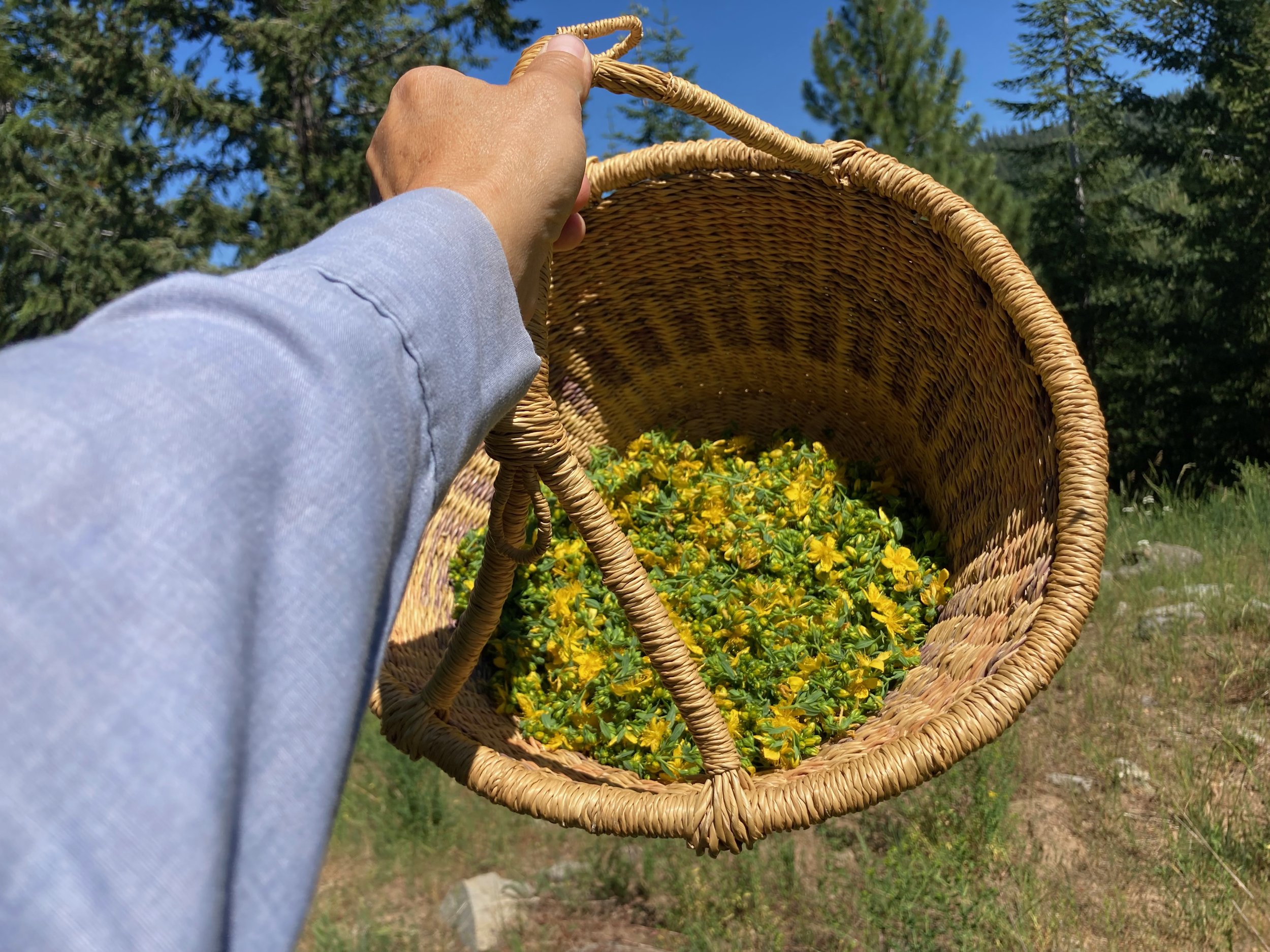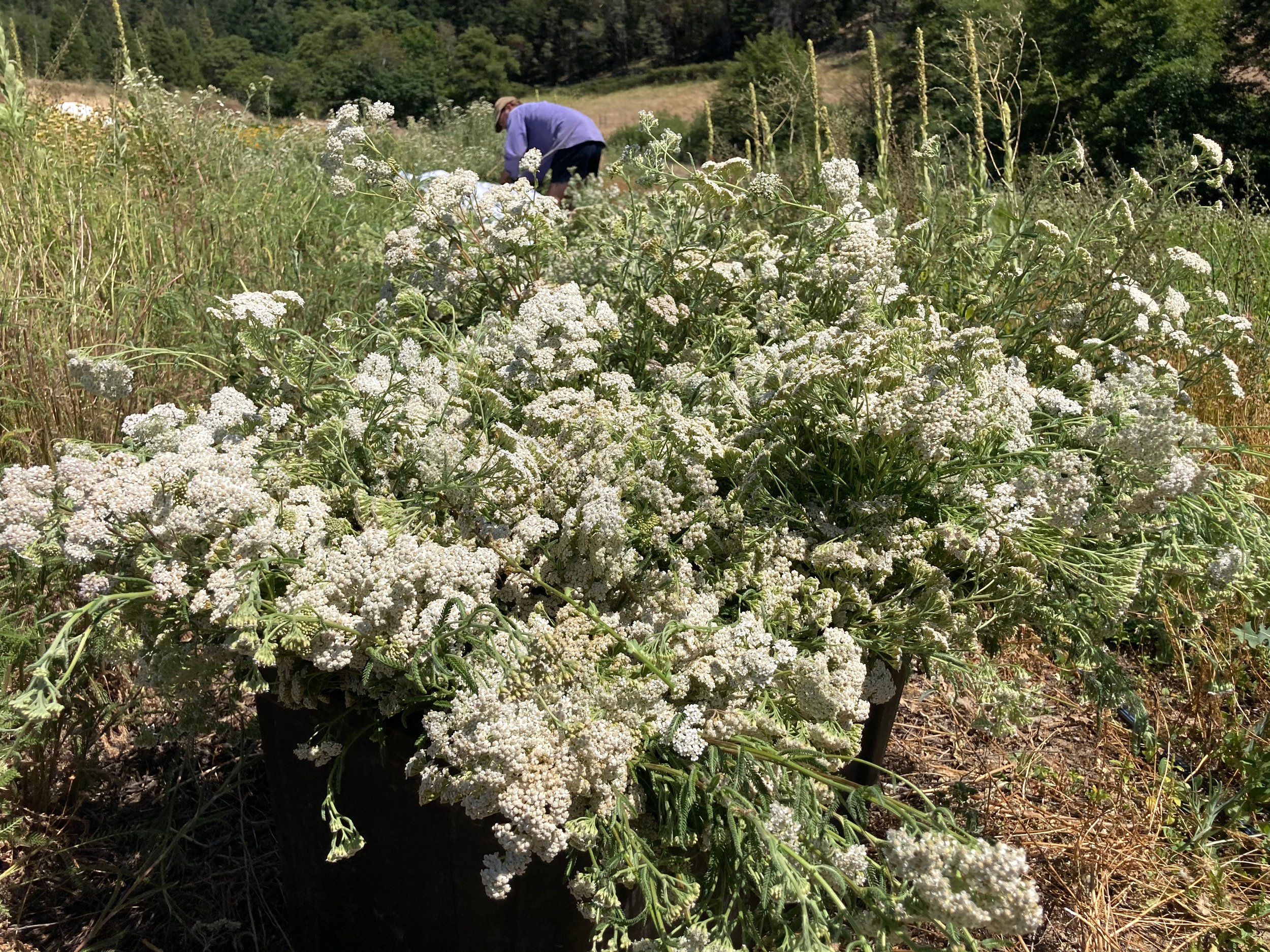NYMPH AND WOODSMAN WELLNESS: When Summer Fun Hurts: Herbs for Twists, Sprains, and Bone Injuries
Happy high summer, y’all!
These are crazy times, yet we hope you’re finding some peace and rest and summer fun amidst it all. There is still so much beauty in this world.
I hope it’s not the case for you, but sometimes summer fun shows up like a twisted ankle, bruised bum, broken arm, or aching back. So we thought it would be a good time to share some of our favorite local herbs for working with the consequences of too much play or physical labor. Keep reading to learn how to use Comfrey, St. John’s Wort, Cottonwood Bud, Yarrow, and California Bay on your bumped and bruised bodies.
And if you or a beloved are recovering from an injury but don’t have the time or resources to make your own remedies, we’re offering 15% off our Strains, Sprains, and Bones Care Kit through Sunday the 15th. We’d love to send some your way. You can find it here. Use code HIGHSUMMER at checkout.
In love and beauty,
xoxo Becca and Seth
Medicinal Use of Comfrey
Bees love Comfrey!
Comfrey is one of the best and most accessible herbs we know for working with injuries to the skeleton and connective tissues. Comfrey’s scientific name, Symphytum officinale, is derived from the Greek symphis, which means “growing together of bones” or “knit together.” This points to Comfrey’s thousand-of-years-long history as a remedy for bone injuries.
In addition to its historic use as a poultice, compress, and salve to aid the healing of bones, Comfrey has been used for ankle twists and sprains, torn ligaments, knee and back pain, bruising, and the healing of superficial wounds. In addition, Comfrey may also be useful in treating skin conditions following radiation in Cancer patients.
Please visit Comfrey’s Plant Profile to learn more about growing, harvesting, and making your own salve out of Comfrey.
Cottonwood Bud Honey
Medicinal Use of Cottonwood Bud
I love Cottonwood Buds so much! Their medicinal properties are MANY, but for this blog post I will focus on Cottonwood Bud’s historic use as an anti-inflammatory and pain-reliever. Containing Salicylic Acid, the active component in aspirin, Cottonwood Bud resins dissolved in oil can help modulate the aches, pains, and swelling that accompany injury and general wear-and-tear.
If you want to make your own Cottonwood Bud oil or salve, also known as the Balm of Gilead, you’ll have to wait until late winter or early spring when Cottonwood trees are budding and the winds have blown down some branches filled with resinous buds.
At that point, you can fill a glass jar halfway with the sticky buds, then cover them and fill the rest of the jar with olive or another oil of your choice, leaving about an inch of room at the top of the jar. Tuck the jar in a paper bag and place it somewhere warm for 1-3 months, shaking regularly. When your oil is good and ready, strain it, label the jar, and use it for pain, inflammation, massage, and more! Check out our Cottonwood Bud Plant Profile to learn more about the many ways it wants to support you.
Medicinal Use of St. John’s Wort
Liquid Sunshine: St. John’s Wort
Sunshine-yellow St. John’s Wort flowers are best known as a remedy for depression, but they offer us so much more! In addition to mood support, St. John’s Wort has historically been used internally and externally to address damaged nerves and sciatic pain. Applied to sore muscles, bruises, strains, and sprains, St. John’s Wort oil has been used to help heal damaged nerves and the pain associated with it.
There is also evidence that St. John’s Wort has antimicrobial and antiviral properties when used topically. For this reason, St. John’s Work is a great place to turn for skin injuries and can be used as a poultice, compress, oil, or salve. With leaves full of teeny tiny holes, we are reminded that St. John’s Wort is also particularly useful for puncture wounds because it helps them heal from the bottom up.
To learn more about this joyful flower, visit our St. John’s Wort Profile Page.
Yarrow abounds!
Medicinal Use of Yarrow
Do you know Yarrow?! It grows all over our land and the wild places surrounding us, and it’s probably somewhere near you, too. Yarrow is famous for its ability to slow or stop bleeding from wounds, and we put it in our first aid salve for that reason. But we also like it for injuries to bones, joints, and tissues. Historically used to reduce muscle pain and inflammation, a yarrow compress, poultice, or bath can be a great support for broken or sprained body parts.
Medicinal Use of California Bay
California Bay wildcrafted on the Wild and Scenic Rogue River
Have you ever smelled California Bay, also known as Mountain Laurel? It’s bright + spicy, and a deep inhalation of its crushed menthol-like leaves clears the sinuses real quick. In addition to its traditional use as a headache remedy and smelling “salt”, California Bay has been used for joint pains and general arthritis. We love the scent it adds to our Twist and Shout! Salve, along with its ability to modulate pain.
Be safe! Be well! And listen to your body.
xoxoxo
Resources
The information for this post came from the following resources:
Carpenter, Jeff and Melanie. 2015. The Organic Medicinal Herb Farmer. Chelsea Green Publishing.
Gladstar, Rosemary. 2008. Herbal Recipes for Vibrant Health. Storey Publishing.
Moore, Michael. 1993. Medicinal Plants of the Pacific West. Museum of New Mexico Press.






